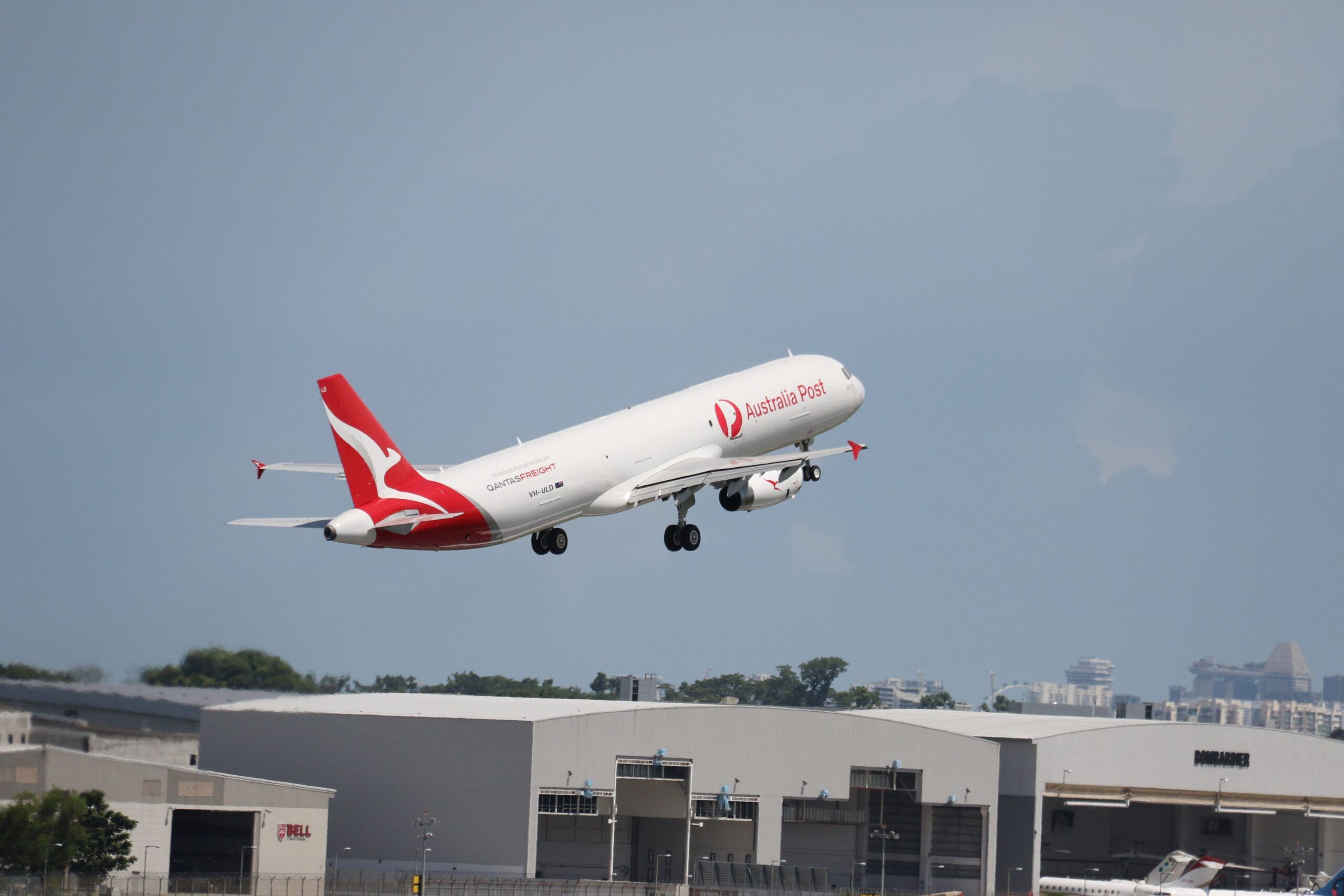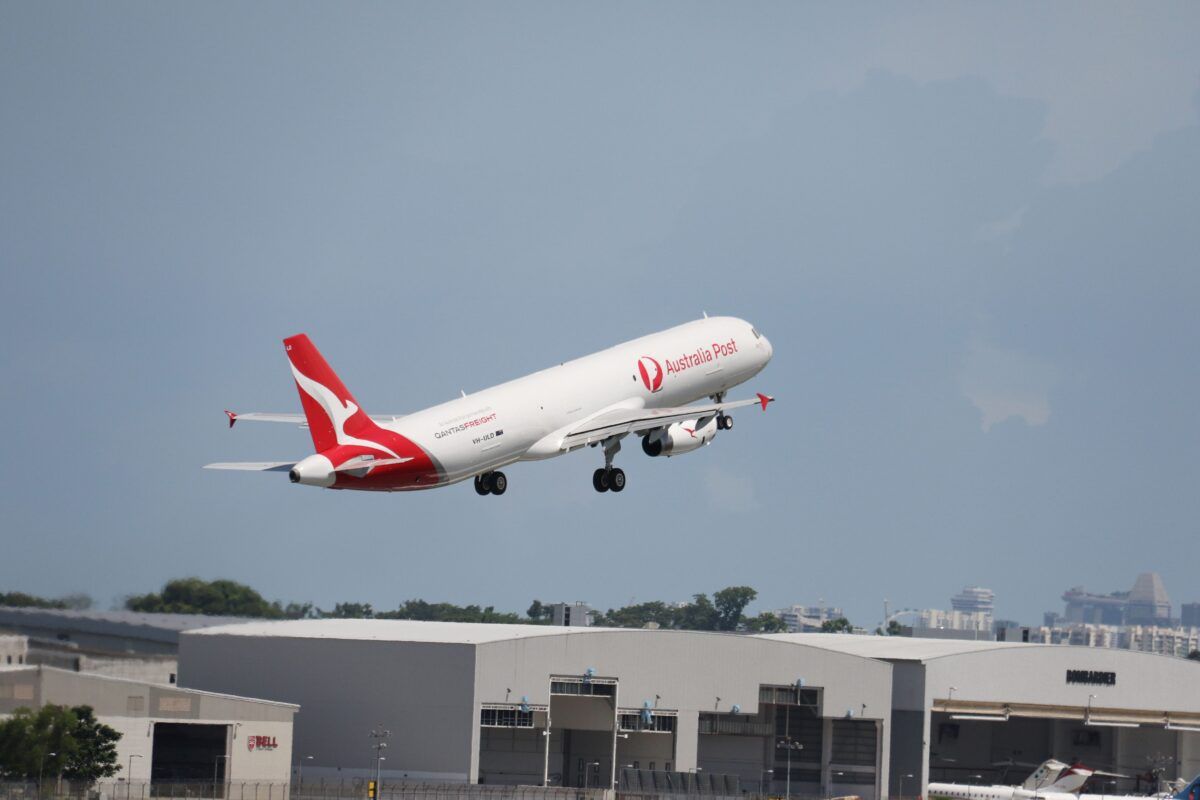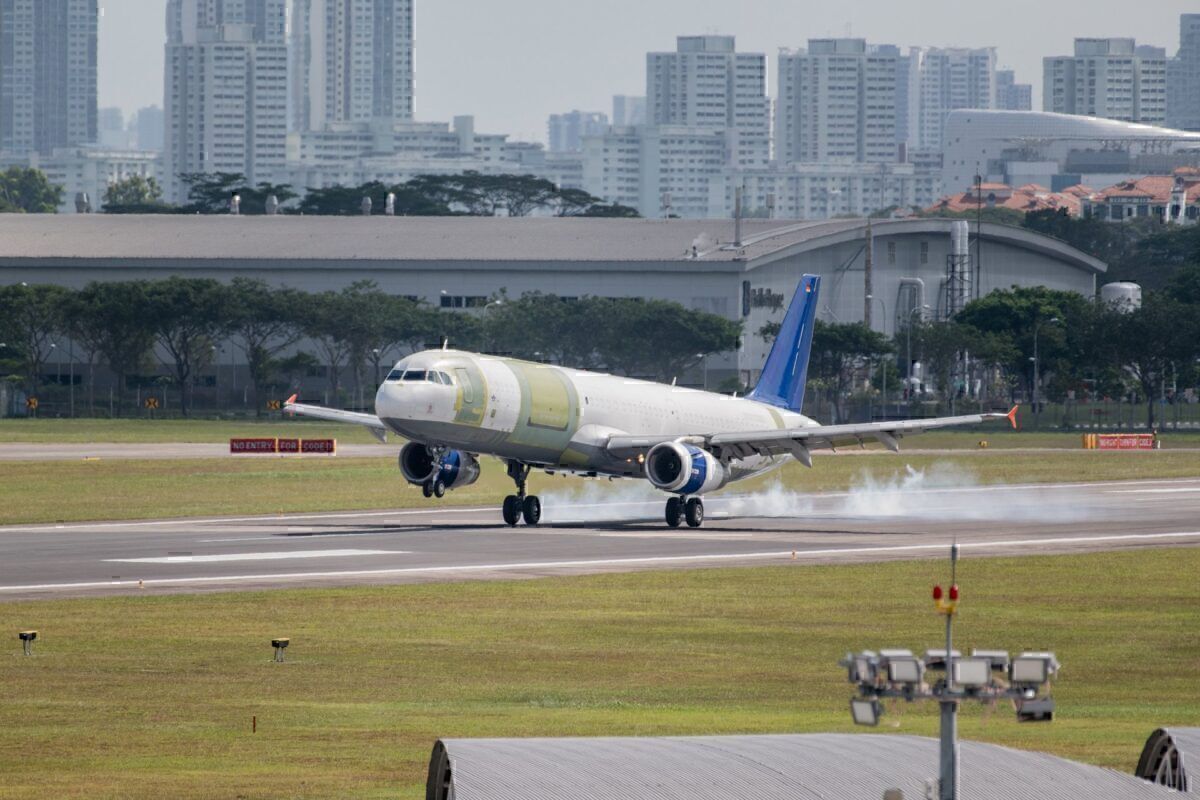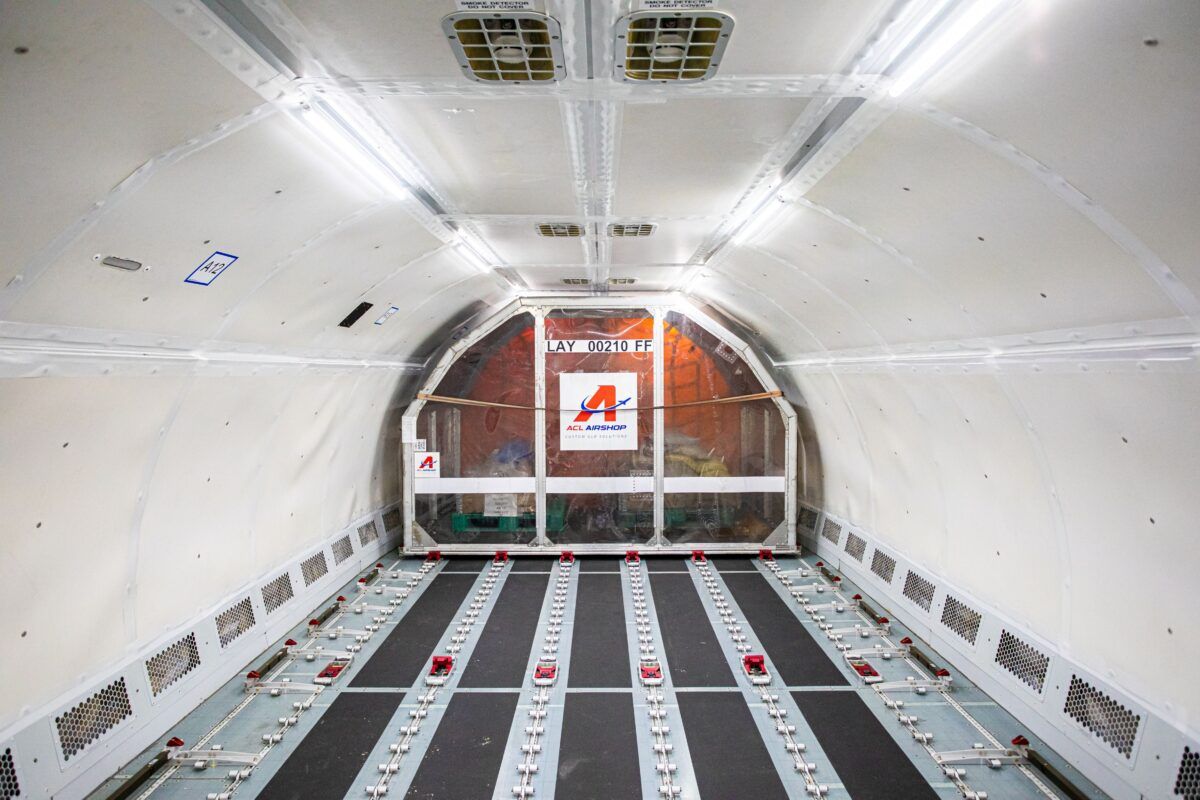Australian national flag carrier Qantas has begun flying the first Airbus A321 converted to carry freight rather than passengers. The Airbus A321P2F will be operated by Qantas in partnership with Australia Post and is the first of three A321P2Fs delivered to the oneworld alliance member. Qantas currently uses Boeing 737-300Fs for its domestic freight services, and the addition of the A321P2Fs will offer an additional nine tons of payload per plane.
According to Planespotters.net, the passenger Airbus A321-200 registration VH-ULD first entered service with British Midland Airways Limited (BMI) in 1998. Turkish low-cost carrier Onur Air leased the aircraft in 2011 until it was sold to aircraft asset specialist Vallair in 2018.
Stay informed: Sign up for our daily aviation news digest.
Vallair provides services for older aircraft
Vallair is an aviation company headquartered in Luxembourg with facilities in Châteauroux and Montpellier in France. Vallair provides integrated support for older aircraft, engines, and significant components. Vallair has six complementary business units offer the following services:
Capabilities:
- Cargo Conversions
- Teardown & Recycling
- Aerostructures
- MRO
- Leasing & Trading
- Engines
- Component Support
The planes are converted in Germany and Singapore
At the front of the program to convert passenger Airbus aircraft into freighters is Singapore-based aerospace company ST Engineering. ST Engineering partners with European planemaker Airbus and Dresden-based German aerospace manufacturer Elbe Flugzeugwerke (EFW).
The entry of VH-ULD into service as an A321P2F cargo hauler comes after a series of certification efforts with the European Union Aviation Safety Agency (EASA). In February, the European safety body issued its aircraft certification with the American Federal Aviation Authority (FAA) following suit in July. Once the aircraft certification process was completed, the aircraft was returned to ST Engineering to incorporate operator-specific enhancements before being certified again and delivered to Qantas.
Vallair sees a strong demand
Gregoire Lebigot, President & CEO at Vallair, foresees a growing demand for these types of conversions saying in a company press release the following:
"The A321P2F will be the first aircraft to introduce a containerized lower deck to the market segment of narrowbody freighters, a significant game-changer for any hub and spoke operation. We see a huge potential for this aircraft as a key tool for the cargo industry to achieve the projected growth rate of the air freight market in general, particularly express services and e-commerce. Additionally, the substantial fuel efficiency advantages are well-suited to 1-4 hour flight legs.
"We have invested in a fleet of feed-stock A321 aircraft, and our team continues to work with exceptional dedication to bring this program to fruition. We anticipate that a mature production line for conversion will settle at around four months, and we are already in negotiation with other airlines and operator/lessees, keen to upgrade their freighter fleets."
The completion of the first A321P2F shows airlines how that can breathe new life into underutilized aircraft while at the same time increasing the plane's residual value.
ST Engineering recently announced that they were upping their plans to build nine converted A321P2Fs to 25. ST Engineering says that the A321P2F can carry up to 24 tons of cargo in 24 containers, a distance of 2,300 nautical miles.
It would appear that older A321-200s could have a role to fill as cargo aircraft. Please tell us what you think about the A321P2F in the comments.




